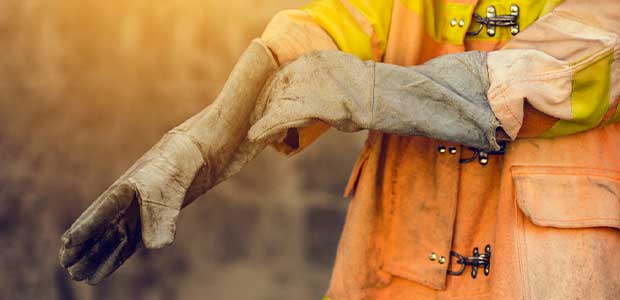
Understanding the Heat Burden While Wearing Personal Protective Clothing
PPE can have effects on employees who work in heat.
- By Bernard Fontaine
- Jul 29, 2022
Abstract
Environmental factors (e.g., humidity, wind, temperature, radiant heat, clothing, and workload i.e., metabolic rate) are considered when determining if a heat risk is present indoors or outdoors. There is little doubt that heat stress affects many workers adversely and the additional heat load from protective clothing adds to the risk. The ACGIH Threshold Limit Value TLVs and the National Institute for Occupational Safety and Health (NIOSH) Criteria Document Recommended Exposure Levels (RELs) for heat stress are two guiding documents to evaluate heat stress. Adjustment factors have been evaluated to reflect the change in heat stress imposed by different clothing ensembles. While some Clothing Adjustment Factors (CAFs) were calculated with limited experimental data and some professional judgment, heat balance methods in the laboratory have yielded better estimates for a wider selection of clothing ensembles. These experiments provide the starting point to evaluate work clothing and personal protective clothing in heat balance evaluations based on sweat and heart rate, blood pressure and skin temperature. Proposed CAFs in the ACGIH TLVs and NIOSH REL provide a framework to rethink a corrected Wet Bulb Globe Thermometer (WBGT) measurement based on the work activity, environment, human physiology, frequency and duration of the exposure.
Introduction
Anyone who has worked in industry indoors while wearing personal protective clothing knows about the additional heat load during the summertime or working outdoors in a hot indoor environment. The National Institute for Occupational Safety and Health (NIOSH) and other researchers looked at the increased risk of heat stress while wearing different types of personal protective equipment (PPE). Wearing PPE can often increase the risk for heat-related illnesses by increasing blood pressure and core body temperature (i.e., internal temperature) more quickly than wearing other types of loose fitting PPE in the same work environment. Some information is discussed in the American Conference of Governmental Industrial Hygienists (ACGIH) Threshold Limit Values documentation for Heat Stress and Strain but does not address the additional metabolic heat load from wearing PPE and the need to correct environmental measurements.
Wearing PPE reduces the body’s normal way of getting rid of heat by sweating and evaporation. Moisture from sweating may not be wicked away and the radiant heat may not be released by convection. It may trap excess heat and moisture inside, making the worker’s body even hotter. Furthermore, it can increase the physical effort to perform work tasks and job duties while carrying the extra weight of the PPE and lead to heat stress faster (e.g., working muscle increases body heat production). While this information may seem intuitive on the surface, the issue is not fully realized by stakeholders developing standards and providing guidance to protect workers against heat stress. Nor are the controls and adjustments made when evaluating the work environment to reduce the additional heat load by clothing ensembles.